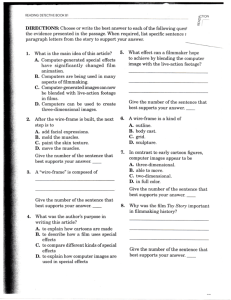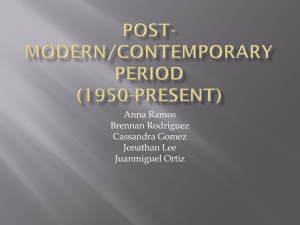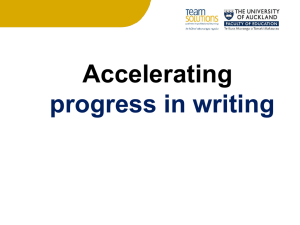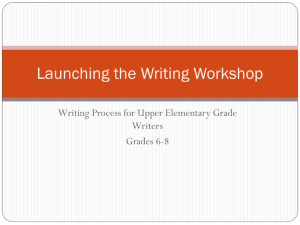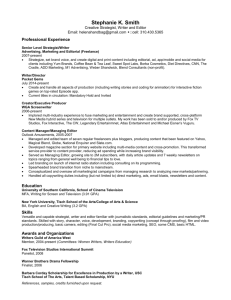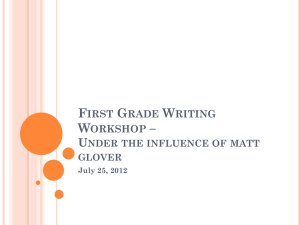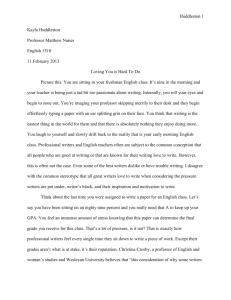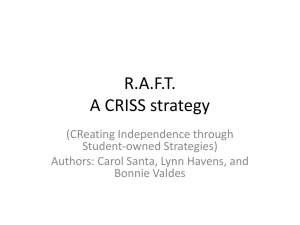Conferring with student writers
advertisement
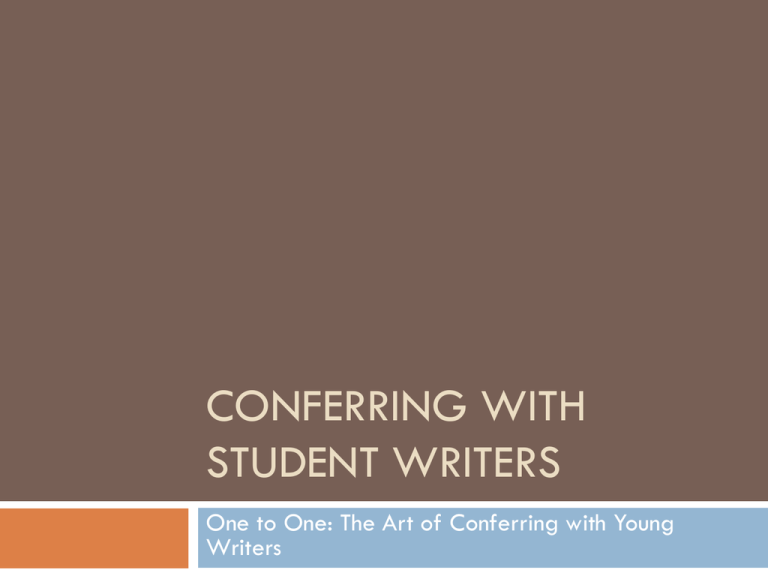
CONFERRING WITH STUDENT WRITERS One to One: The Art of Conferring with Young Writers Conferring with Student Writers RESEARCH the writer SUPPORT/COMPLIMENT the writer DECIDE what your teaching point will be and how you will teach it TEACH the writer something, following the architecture of a minilesson LINK: Rearticulate what you’ve taught and encourage the child to do this often as he writes RESEARCH the writer Begin with an open ended question that invites a student to talk about writing work “How’s it going?” “What are you doing as a writer today?” Ask a question (and follow up on the response) to learn more about his writing work “Show me where you’ve done that?” Look at the student’s writing to gain a deeper understanding Learn what the child is planning to do next Aim is to understand what the child is trying to do and has done, and to ascertain how you could be most helpful SUPPORT/COMPLIMENT the writer Name what the child has already done (or has gestured towards doing) that you hoe pthe child continues to do always. Make this a very clear, personal, intimate compliment. Make a whole paragraph out of your compliment. DECIDE what your teaching point will be and how you will teach it Choose 1 teaching point & stick to it Will you demonstrate? Engage the child in guided practice? Provide an explanation and an example? Support the child in shared inquiry? Ask “Based on what I’ve learned so far in the conference and in my work with this child, what can I teach that will help her become a better writer?” Remember your goal is not to just improve the writing, but to improve the writer In some conferences you’ll decide: To lift the level of what the child is already doing or trying to do. Or acknowledge what the child is trying to do but recruit his working in a different direction & then help him get started on the new work TEACH the writer something Connect: Acknowledge what the child has been doing. Tell the child what your teaching point will be. “What I want to teach you is…” Be explicit and be sure you are teaching something that will help not just today but also tomorrow. Teach: using one of four methods (demonstration, guided practice, explicitly telling or inquiry) to teaching the child something that writers do often Active involvement: often you’ll nudge the child to get started trying this while you are there, or at least to talk-through how he or she might get started Jot your conferring notes as you go LINK: Rearticulate what you’ve taught Restate the strategy you’ve just taught by saying, “Today, and everyday, whenever you are writing, you can…” or, “This is something writers do all the time…” REMEMBER: Use fragments of a conference rather than a whole conference – at times Circle the room to touch base with table of kids, simply give compliments Stop talking and teaching for a bit & simply pull up next to children to research and decide future teaching points for individual writers or small groups – at times

